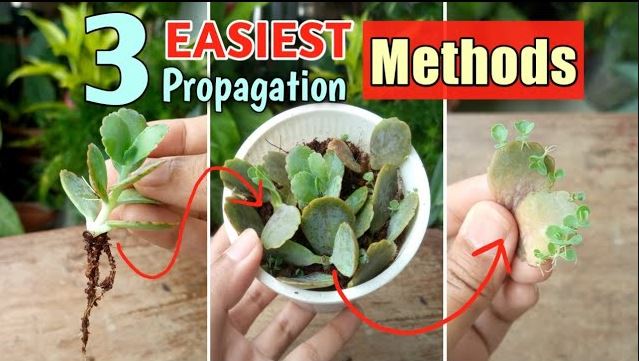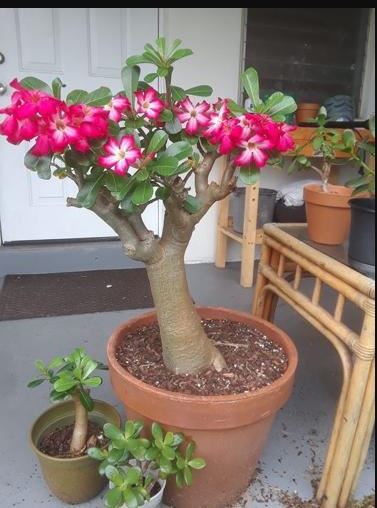Have you ever looked at your vibrant Kalanchoe, with its clusters of colorful blooms, and thought, “I want more of this beauty”? Or maybe you’ve received a Kalanchoe as a gift and wondered how to keep the joy going. Well, you’re in luck! Kalanchoes are some of the easiest succulents to propagate.

Your Foolproof Guide to Propagate Kalanchoe
This isn’t just about creating more plants for your home; it’s about unlocking a world of generosity. Imagine sharing these vibrant blooms with friends, family, or neighbors. It’s a gift that keeps on giving – literally! Ready to dive in and learn the secrets of Kalanchoe propagation?
Why Every Kalanchoe Owner Needs This Skill
Before we get into the nitty-gritty, let’s answer the “why.” Why should you bother learning to propagate Kalanchoe?
- Thrifty Gardening: Creating new plants from existing ones is the most budget-friendly way to expand your garden or indoor collection.
- Sharing the Joy: Kalanchoes make wonderful gifts. Propagating allows you to share the joy of these beautiful plants with others.
- Rejuvenating Old Plants: Over time, Kalanchoes can become leggy. Propagation allows you to start fresh with young, healthy plants.
- The Green Thumb Factor: Propagating is incredibly satisfying and gives you serious bragging rights as a plant enthusiast.
Three Simple (But Effective!) Methods of Kalanchoe Propagation
Kalanchoes are amazingly versatile, offering you three main ways to propagate:
1. Leaf Cuttings: The Ultimate Beginner’s Method
Kalanchoe propagation from leaf. This is the most straightforward method and ideal for beginners. Here’s the breakdown:
- Selecting the Leaf: Choose healthy, mature leaves that are free from pests or diseases.
- Making the Cut: Use a clean, sharp knife or scissors to carefully remove the leaf from the main stem.
- Drying the Leaf (Optional): Some people let the leaf dry for a day or two to help it heal, but this isn’t always necessary.
- Planting Time: Fill a small pot with well-draining cactus or succulent mix. Gently place the leaf cutting on the soil, ensuring the cut end is in contact with it.
- Patience is Key: Place the pot in a bright location, but out of direct sunlight. Lightly mist the soil regularly. Within a few weeks, you should see tiny plantlets emerging from the leaf’s base.
2. Plantlets (Offsets): Nature’s Little Helpers
Many Kalanchoe varieties produce tiny plantlets (also known as pups or offsets) along their stems or at the base. Here’s how to use them:
- Identifying Plantlets: Look for tiny, fully formed plants with their own roots growing on the mother plant.
- Gentle Removal: Carefully detach the plantlet from the mother plant. You can use your fingers or a clean tool.
- Potting Up: Plant the plantlets in individual pots with well-draining soil.
- Nurturing Growth: Place the pots in bright, indirect light and water sparingly.
3. Stem Cuttings: How to propagate kalanchoe from stem cuttings

propagate kalanchoe from stem cuttings are another great way to propagate, especially for bushier varieties:
- Choosing the Stem: Select a healthy stem that’s about 4-6 inches long and has several leaves.
- Making the Cut: Using clean, sharp scissors or pruners, cut just below a leaf node (the point where leaves attach to the stem).
- Preparing the Cutting: Remove the lower leaves from the cutting, leaving only a few at the top.
- Rooting (Optional): You can dip the cut end in rooting hormone, but it’s not always necessary.
- Planting: Insert the cutting into a pot with well-draining soil, burying the lower node.
- Caring for the Cutting: Place the pot in bright, indirect light and water sparingly. In a few weeks, roots should develop, and new growth will appear.
The Kalanchoe Care Cheat Sheet (For New and Old Plants Alike)
Whether you’ve propagated your own Kalanchoes or brought home a new one, here’s a quick care guide to keep them thriving:
- Light: Kalanchoes love bright, indirect light. Some morning sun is fine, but avoid harsh afternoon rays.
- Water: These succulents are drought-tolerant. Water thoroughly when the soil is dry, but don’t let them sit in waterlogged soil.
- Temperature: Kalanchoes prefer moderate temperatures between 60-75°F (15-24°C).
- Fertilizer: Feed your Kalanchoe with a diluted succulent fertilizer every 4-6 weeks during the growing season.
Troubleshooting Your Kalanchoe Journey
- Yellowing Leaves: This could indicate overwatering or poor drainage.
- Leggy Growth: The plant is likely stretching for light. Move it to a brighter spot.
- No Flowers: Kalanchoes need a period of shorter days and longer nights to bloom. Simulate this by placing them in a dark room for 12-14 hours each night for several weeks.
FAQs About Kalanchoe Propagation
Q: When is the best time to propagate Kalanchoe?
A: The ideal time is during the spring or summer when the plant is actively growing. This ensures faster rooting and healthier new plants.
Q: Can I propagate Kalanchoe in water?
A: While some succulents can be propagated in water, Kalanchoes are best propagated directly in soil. This helps them develop stronger roots and adapt to their growing environment.
Q: How long does it take for Kalanchoe cuttings to root?
A: It usually takes 2-4 weeks for cuttings to develop roots. Leaf cuttings might take a bit longer, around 4-6 weeks.
Q: Why are my Kalanchoe cuttings rotting?
A: Overwatering is the most common cause of rotting. Ensure your soil is well-draining and let it dry out slightly between waterings.
Q: Do I need to use rooting hormone for Kalanchoe propagation?
A: Rooting hormone is not mandatory, but it can accelerate root development and improve success rates.
Q: Can I propagate Kalanchoe from a flower stem?
A: It’s not recommended to propagate from a flower stem. Flower stems tend to have less energy for new growth and are less likely to root successfully.
Q: What type of soil should I use for Kalanchoe propagation?
A: Use a well-draining soil mix specifically designed for succulents or cacti. You can also create your own mix by combining potting soil with perlite or sand.
Q: How often should I water Kalanchoe cuttings?
A: Water sparingly, allowing the soil to dry out slightly between waterings. Overwatering can lead to rotting.
Q: Can I propagate Kalanchoe outdoors?
A: Yes, you can propagate Kalanchoe outdoors in warm climates. Choose a location with bright, indirect light and protect cuttings from extreme heat or cold.
Q: What if my Kalanchoe cuttings are not developing roots?
A: If your cuttings are struggling to root, try using a rooting hormone, increasing humidity by covering them with a plastic bag, or ensuring they receive adequate warmth and light.
Can you grow kalanchoe from a leaf?
Yes, you can propagate Kalanchoe from a leaf, although it’s not as common as using stem cuttings. Choose a healthy, plump leaf and allow the cut end to callous over for a day or two. Then, partially bury the cut end in well-draining soil. Keep the soil slightly moist and provide bright, indirect light. It might take longer than stem cuttings, but with patience, you’ll eventually see new plantlets forming at the base of the leaf.
Conclusion
Propagating Kalanchoes isn’t just about multiplying your plant collection; it’s about embracing the cycle of growth, generosity, and the simple joy of watching life unfold. So, get out there and give it a try. The rewards are as abundant as the Kalanchoe’s blooms!
Ready to unleash your inner plant propagator? Grab a leaf or a plantlet from your Kalanchoe and start your propagation journey today! Have questions or tips to share? Drop a comment below. Let’s create a community of Kalanchoe enthusiasts, spreading the love, one plant at a time!
Read Also:- Kalanchoe Craving More Blooms? Homemade Fertilizer for Kalanchoe DIY

